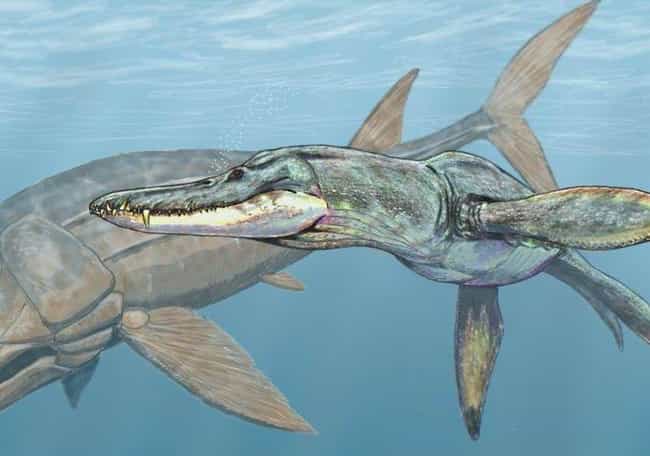
Liopleurodon, A Reptilien Behemoth
[ranking: 5]
The Liopleurodon was a giant marine reptile and one of the fiercest predators of the Jurassic period. These massive sea monsters could grow up to 30 feet in length (although some fossils suggest even larger sizes) and had sizeable teeth that would have made a quick meal out of most marine life.
Despite its size, scientists estimate this reptile probably swam surprisingly fast, and like many sharks, Liopleurodon had an excellent sense of smell, which it used to locate prey. While this all may sound intimidating, chances are Liopleurodon was not even the largest animal in its class; that title most likely goes to Kronosaurus.

Ichthyosaurs, The Jurassic Dolphin
[ranking: 11]
Another of Mary Anning's discoveries was the Ichthyosaurs, a marine reptile that looked eerily similar to a modern-day dolphin. This is due to a process known as convergent evolution, which happens when species that are not related to each other evolve to have similar body shapes.
Ichthyosaurs also share similar body traits with mackerel and tuna, the fastest living fish in the sea, and it is believed that ichthyosaurs were incredibly speedy. Their powerful tails have the same crescent shape and were likely assisted by powerful muscles, allowing them to reach super fast speeds.
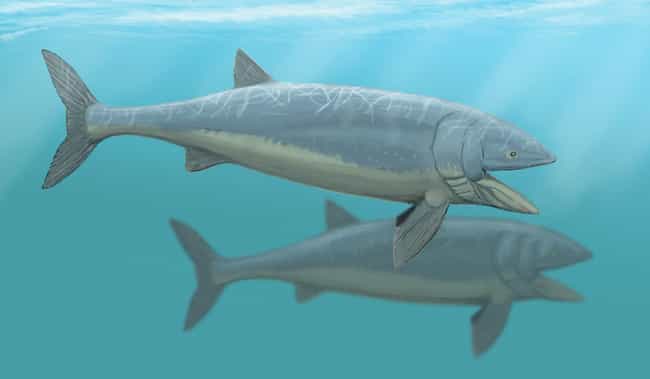
Leedsichthys, The Largest Fish Ever
[ranking: 10]
Even though scientists originally overestimated the size of this giant fish by whopping 40 feet, it is still considered to be the largest bony fish ever discovered. In fact, the Leedsichthys was so big that its gill bones have sometimes been mistaken for the bones of pterosaurs. Although they could grow up to 55 feet in length, their great size didn't make them great hunters. Like many sea giants, Leedsichthys survived by feeding on some of the smallest creatures in the sea: Plankton probably made up a majority of their diet, although it??s difficult to pinpoint the feeding habits of an extinct animal. Scientists believe that, even though the largest discovered specimen was around 55 feet, that these animals could likely have grown to be even bigger.
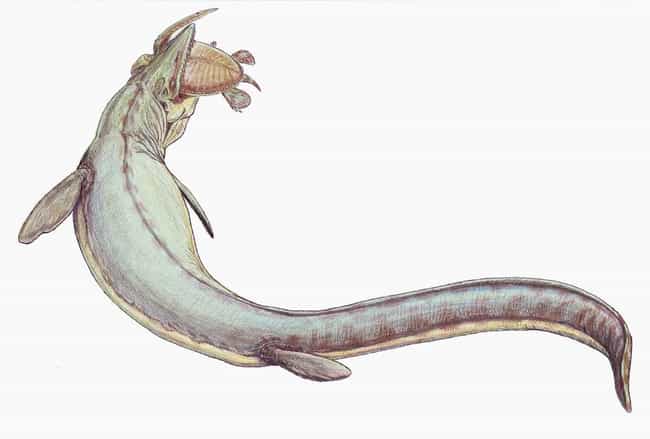
Mosasaurus, A Ferocious Prehistoric Predator
[ranking: 4]
The Mosasaurus became an international celebrity after its breakout performance in Jurassic World, and the real-life version is just as impressive. These giant reptiles could likely swallow most of their prey whole but preferred slicing meals into bite-sized morsels with their backward-bending teeth.
Paleontologists have been studying these animals for years, and a recent discovery has shed new light on the early lives of mosasaurs. Researchers examined two baby mosasaurs and learned that they actually spent their early lives in the open ocean. This discovery has led some scientists to believe that mosasaurs gave birth to live young.
More Mosasaurus
#3 of 12 on 12 Famous Prehistoric Animals You'll Be Surprised To Learn Aren't Actually Dinosaurs #3 of 15 on List of Dinosaurs That Appear In Jurassic World
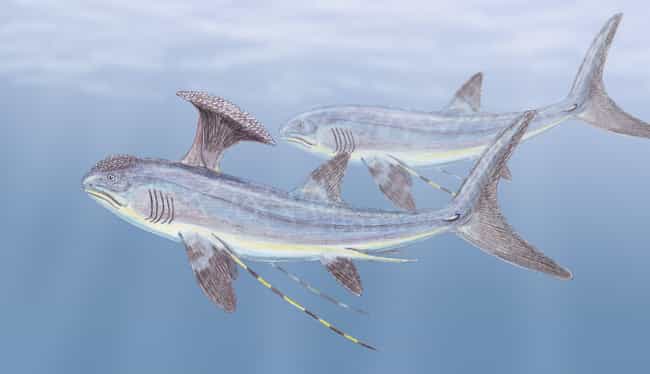
Stethacanthus, An Ancient And Extraordinary Shark
[ranking: 9]
This bizarre shark wasn??t the largest fish in the sea, but it is noteworthy thanks to one unique trait. Stethacanthus had an extremely unusual dorsal fin, completely unique in the shark fossil record, which scientists are still trying to understand. One suggestion is that male Stethacanthus used their anvil-shaped fin to attract mates, but others believe it could have been used to intimidate potential predators looking to munch on this cat-sized shark. Either way, these small, slow sharks were probably bottom-feeders.
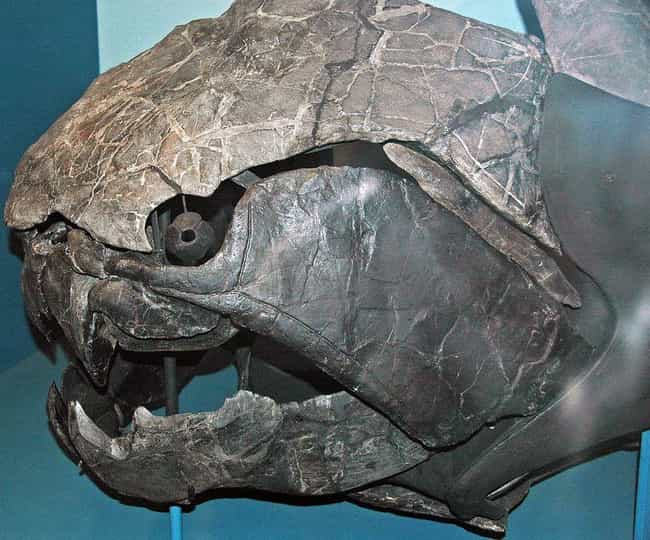
Dunkleosteus, An Armored Death Machine
[ranking: 2]
This ancient fish lived 400 million years ago, but its bite has stood the test of time. Scientists believe the Dunkleosteus had the strongest bite of any fish ever discovered - one that could be compared to the bite of a Tyrannosaurus rex. Scientists have crunched the numbers and determined that, just at the tip of its fang, this fish??s bite could measure at 8,000 pounds per square inch. They were absolute apex predators, preying on sharks and basically anything it could catch (everything). Dunkleosteus was also 33 feet long from tooth to tail and covered in thick armor-like plating, making it one of the ocean??s first giant predators.
New Random Display Show all by ranking(11 items)









